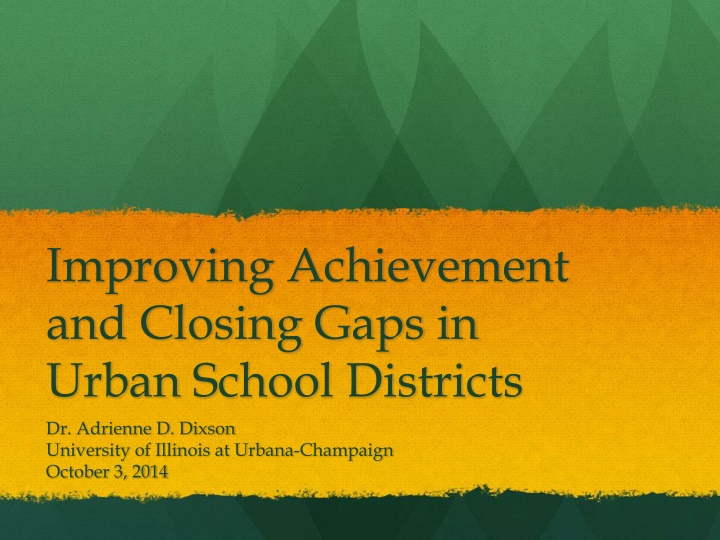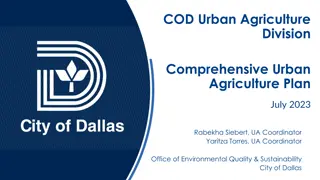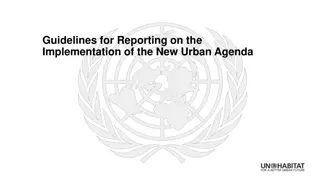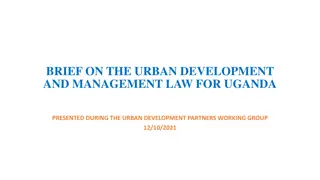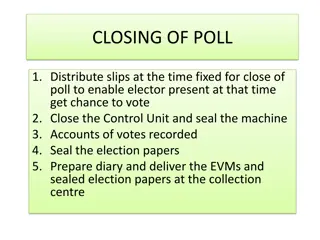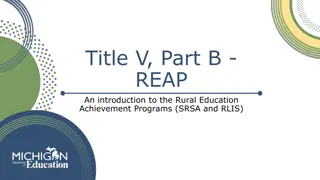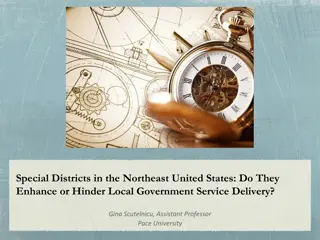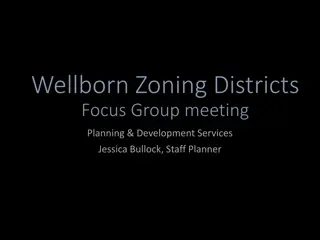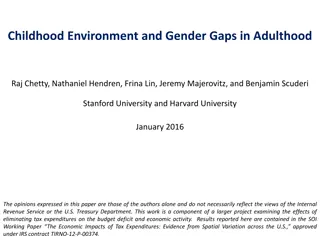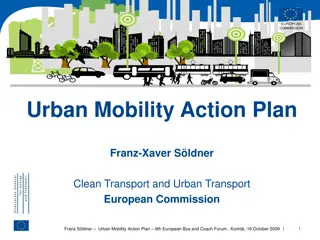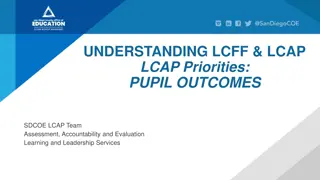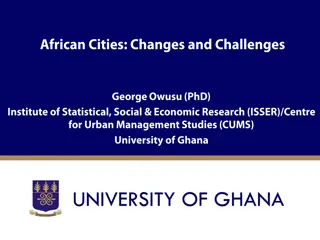Improving Achievement and Closing Gaps in Urban School Districts
Addressing the challenges faced by urban school districts, this content explores the impact of poverty, demographic imbalances, and systemic issues on student success. It highlights the need for targeted strategies to uplift students and enhance educational outcomes in urban settings.
Download Presentation

Please find below an Image/Link to download the presentation.
The content on the website is provided AS IS for your information and personal use only. It may not be sold, licensed, or shared on other websites without obtaining consent from the author.If you encounter any issues during the download, it is possible that the publisher has removed the file from their server.
You are allowed to download the files provided on this website for personal or commercial use, subject to the condition that they are used lawfully. All files are the property of their respective owners.
The content on the website is provided AS IS for your information and personal use only. It may not be sold, licensed, or shared on other websites without obtaining consent from the author.
E N D
Presentation Transcript
Improving Achievement and Closing Gaps in Urban School Districts Dr. Adrienne D. Dixson University of Illinois at Urbana-Champaign October 3, 2014
State of Urban Education Increasing levels of poverty Generational poverty Middle class families falling into poverty. Poverty disproportionately impacts African Americans, esp. Black women regardless of ed background
State of Urban Eduation Increase in charter schools and alternatively trained teachers and administrators in high poverty school districts, i.e. Philadelphia, New Orleans, Detroit, Memphis, Chicago
New Orleans System of Systems
New Orleans System of System
State of Urban Education Unstable public school system Loss and displacement of local educators Transient teaching force Disenfranchised public Not financially sustainable Disinvestment in public good and public services
State of Urban Education Demographic imbalance and mismatch Race and gender of teachers majority white and female (82% nationally) Student population in public schools increasingly predominantly students of color (52% nationally)
Activity On your index card, take a few minutes and jot down your thoughts on this question: What impacts student success in your district? With a partner or two Share and discuss your responses
Activity With your partners: Create a common list that includes your and your partner s responses Write a brief description of a typical student in your district. Select one person in your group to represent that student
Activity Divide your list of what impacts students success into two categories: What can you & your district control? What can t you & your district control?
Thank you! Dr. Adrienne D. Dixson dixsonconsulting@gmail.com addixson@illinois.edu 614-602-7614(cell) 217-244-4741 (office) Twitter: @AdrienneDDixson
